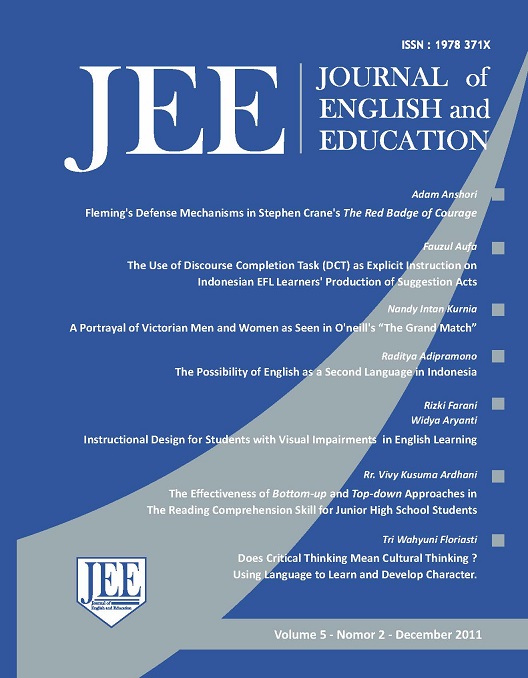Main Article Content
Abstract
One of the most widely discussed concepts in education and educational reform these days is critical thinking. This thing we call critical thinking or analysis has strong cultural components. An area of cultural difference that may influence critical thinking is the use of language to effect thinking and learning. It is more than just a set of writing and thinking techniques- it is a voice, a stance, a relationship with texts and family members, friends, teachers, the media, even the history of one's country (Fox, 1994, p.125). Critical thinking begins when people make the connections between their individual lives and social conditions. In classrooms that feature critical thinking, students are encouraged to participate actively, raising issues of concern in their daily lives, such as work, school, and housing as topics for class discussion. As teachers and scholars grow to understand the unique characteristics of the culture, it is important to see, observe, analyze and response appropriately through language in the class and social life so that young generation can learn how to appreciate members of another culture and go hand in hand with them. It may become an effort to shape the civil society. This condition does not stop at that step. It leads them to act and response critically in daily life. Then, this beneficial actions form good characters
Keywords
Critical thinking
cultural thinking
language learn
character building
Article Details
License
Copyright (c) 2016 JEE, Journal of English and Education

This work is licensed under a Creative Commons Attribution-ShareAlike 4.0 International License.
Authors who publish with this journal agree to the following terms:
- Authors retain copyright and grant the journal right of first publication with the work simultaneously licensed under a Creative Commons Attribution-ShareAlike 4.0 International License that allows others to share the work with an acknowledgment of the work's authorship and initial publication in this journal.
- Authors are able to enter into separate, additional contractual arrangements for the non-exclusive distribution of the journal's published version of the work (e.g., post it to an institutional repository or publish it in a book), with an acknowledgment of its initial publication in this journal.
- Authors are permitted and encouraged to post their work online (e.g., in institutional repositories or on their website) prior to and during the submission process, as it can lead to productive exchanges, as well as earlier and greater citation of published work (See The Effect of Open Access).
How to Cite
Floriasti, T. W. (2011). Does Critical Thinking Mean Cultural Thinking? Using Language To Learn And Develop Character. Journal of English and Education (JEE), 5(2), 90–103. https://doi.org/10.20885/jee.v5i2.5619

